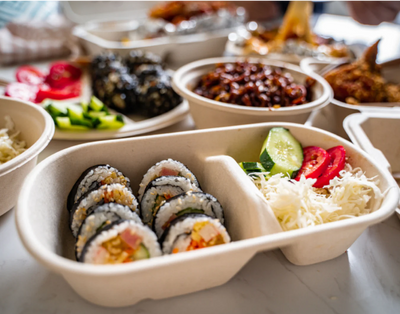Plastic is everywhere. It’s cheap, lightweight, and incredibly convenient. From takeaway containers to cutlery, cosmetics packaging to electronics, plastic plays a major role in our daily lives. But as concerns around plastic pollution and health impacts grow, one specific type of plastic is drawing more attention: black plastic. Sleek, modern, and widely used, black plastic might not be as safe as it looks.
Behind its polished appearance, black plastic poses serious challenges not just for the environment but also for our health. With questions around its recyclability and potential toxicity, many consumers are beginning to wonder: Is black plastic toxic? Should I stop using it, especially for food? This blog will explore what black plastic is, why it’s problematic, and what safer alternatives you can use instead.
What Is Black Plastic and Why Is It So Common?
Black plastic refers to plastic items that are dyed black, typically using carbon-based pigments. This gives products a sleek, “premium” finish that hides dirt and imperfections well. It’s commonly found in takeout food containers, microwave meal trays, cosmetic tubes, and electronics packaging. Because the color masks blemishes and gives products a high-end look, many companies prefer using it for both aesthetic and practical reasons.
In addition, black plastic is often made from recycled materials, including e-waste or mixed plastics that can no longer be color-sorted. While recycling sounds great in theory, it can lead to safety concerns when the origin of the plastic isn’t clearly traceable, specially when reused in food packaging or household goods.
What’s the Problem with Black Plastic?
The biggest issue with black plastic lies in how it interacts with recycling systems. Most modern recycling plants use infrared (IR) technology to identify and sort different types of plastics. However, because black pigments absorb infrared light, these items often go undetected by the sensors. That means even recyclable black plastic usually ends up in landfills, contributing to long-term plastic pollution.
On top of that, there are health concerns. Research has shown that some black plastics, particularly those made from recycled electronics, may contain toxic substances such as flame retardants, heavy metals like lead or cadmium, and brominated compounds. These chemicals are not only harmful to the environment but can also pose risks to human health, especially when black plastic is heated or used to store oily or acidic food. Over time, these substances may leach into food, raising red flags for frequent users of black plastic food containers.
So, Is Black Plastic Toxic?
It depends, but in many cases, the answer leans toward yes. Not all black plastic is toxic, but the lack of transparency around its sourcing and composition makes it difficult to guarantee safety. Single-use black plastic items are especially risky, since they’re often produced with less oversight and may come from low-quality recycled materials. Several black plastic straws and food containers are used widely all over restaurants and food vendors around the world.
This uncertainty makes black plastic a questionable choice for everyday use, particularly in the kitchen. Heating food in black plastic containers, especially in microwaves. may increase the risk of chemical leaching, which can impact long-term health. So while the convenience is undeniable, the hidden dangers should make you think twice.
Eco-Friendly Alternatives to Black Plastic
The good news? There are plenty of safe and sustainable alternatives available today. Instead of relying on black plastic, look for:
-
Compostable straws, utensils and food containers made from sugarcane bagasse, coconut, or grass
-
Reusable materials like glass, stainless steel, or silicone
- Certified food-safe paper or plant-based packaging
At EQUO, we offer compostable straws and food containers made from sugarcane fibers, a renewable resource that’s durable, heat-safe, and compostable within 12 months. These containers are ideal for businesses and individuals looking to minimize waste without compromising functionality or food safety.
What You Can Do to Reduce Risks
Making smarter choices starts with awareness. Here are a few tips to reduce your exposure to black plastic:
-
Avoid heating food in black plastic containers
-
Choose BPA-free and food-safe certified products
-
Say no to single-use plastics whenever possible
-
Support brands that offer transparent, sustainable packaging
It may seem like a small change, but choosing safer materials can significantly reduce your environmental impact and protect your health in the long run.
It’s Time to Rethink Black Plastic
Black plastic might be visually appealing, but its downsides are hard to ignore. With poor recyclability and possible health hazards, it’s not the smart, safe choice we once thought it was. As consumers, we have the power to demand better for ourselves and the planet.
So next time you're handed a black plastic takeout box, consider the cost. Not just the price tag, but the impact on your health, your environment, and your future.


